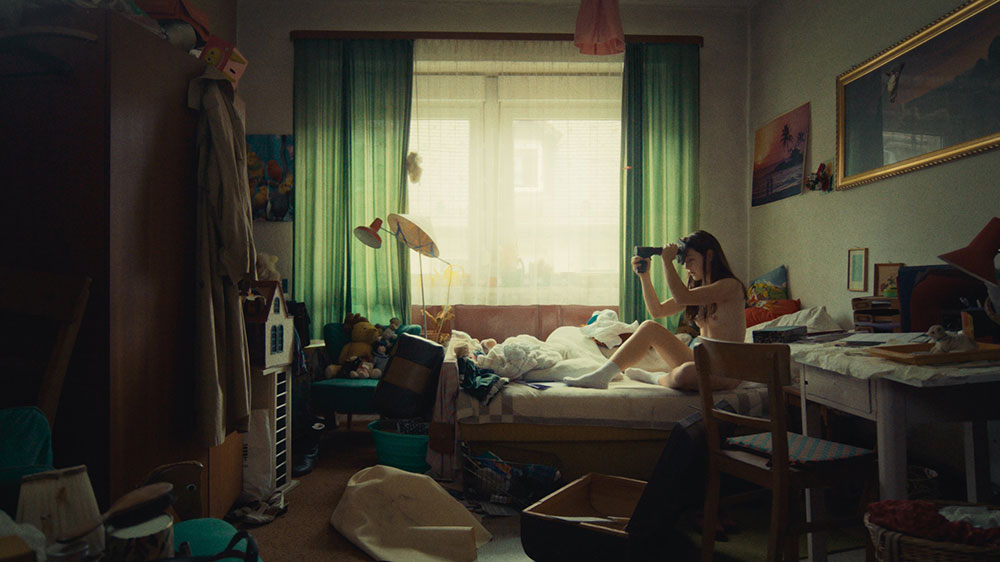At the height of their infamy, serial- and spree-killers receive an astounding level of media coverage. So do their parents. Sabrina Mertens has said that Time of Moulting (2020) was inspired by a criminal case in Germany (she refrains from mentioning which one). The admission is telling, given that there’s nary a crime in the film that would warrant so much as a citation. It’s clear, however, to whom and what Mertens is referring by the halfway point of her perverse coming-of-age story, when time skips ahead to show the protagonist, Stephanie–heretofore a bright, if deeply put-upon, young girl—10 years later. As a teen poised to leave the proverbial nest, Stephanie masturbates and self-harms with her grandmother’s dentures and draws pictures of necrophilia and cannibalism.
Mertens’s film is divided into two parts, a “before” and “after.” The structure is a manifestation of a fantasy: having a clear, objective view of the past to pore over in search of what went wrong. Mertens’s investigation begins and ends at home. Subtle hints, however, gesture to a scope as vast as an empire.
Stephanie’s mother is frail and pathologically childlike, seeming not to have progressed past her daughter’s age on an intellectual or emotional level. Her doting is self-serving and disturbingly disrespectful of boundaries. In eerie contrast, Stephanie’s father is remote, angry, and much, much older. Neglect is more than implied—it’s made manifest in the piles of junk that crowd every surface of the home. Discouraged from playing with other children and even from venturing outside, Stephanie is left with nowhere to go except deeper into the house. In the basement, she escapes to the past via old photographs and relics from her grandfather’s time as a butcher.
Time of Moulting is described in its official synopsis as “the still life of a family in 57 pictures,” each a still take. Mertens allows ample space for the eye to wander and the mind to wonder. An early scene wherein Stephanie’s mother asks for a massage and the child reacts with discomfort invites speculation on sexual abuse. There are also clues that Stephanie’s “father” is also her grandfather. The film’s setting in Germany in the 1970s, meanwhile, begs for some light equation-solving. We can assume that Stephanie’s mother was born during the Third Reich and that her father was either an active participant or front-row witness to atrocities.
Freud has cited cannibalism, incest, and necrophilia as universal taboos that exist to uphold society. Specific as Stephanie’s sexual urges are to her upbringing, they’re also symbolic. Mertens’s case study on nature versus nurture acknowledges that blame can be traced along the lines of a family tree. But trees, too, are a product of their environment, and native soil can be poisoned.
Time of Moulting screens tonight, October 24, at Spectacle Theater as part of the series “Spectober 2023.”



